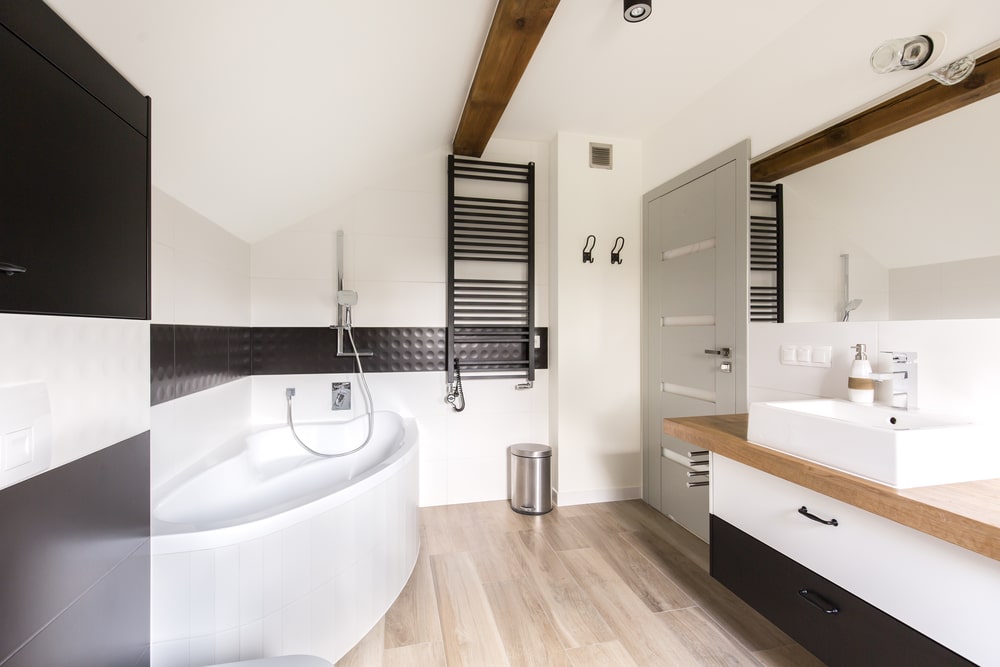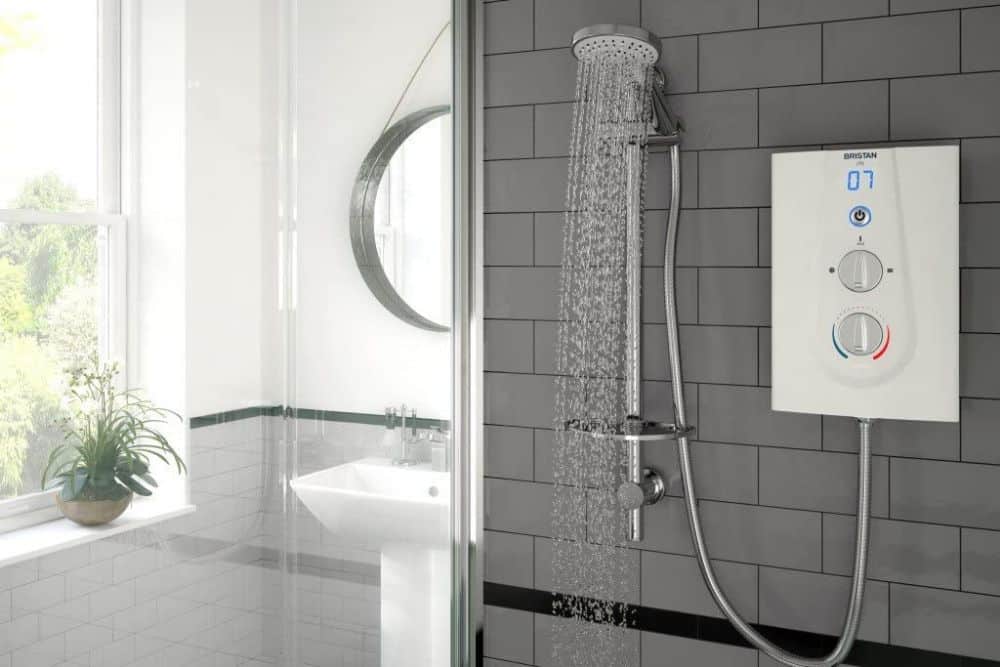Last Updated on
There are many possible answers to the question, “how does a bathroom heater work?” Fundamentally, bathroom heaters are appliances specially designed to generate heat energy through electricity or an internal combustion system.
They’re often considered a core part of any bathroom, as they help to keep you warm and comfortable when you’re bathing, showering, or just brushing your teeth at night. Your bathroom heater’s exact functionality and features will vary depending on various factors, including the type of product you buy.
Knowing how each form of bathroom heater works and what these products can do to improve your comfort levels can help you make better decisions about which items are best for your home. Here’s everything you need to know about bathroom heaters.
How Do Different Types of Bathroom Heater Work?
There are many different types of bathroom heaters, including portable heaters, central heating systems, and infrared bathroom heaters. Most of these products fall into one of two categories. They’re either powered by electricity and connected to an outlet in your home to produce energy or linked to your central heating system, boiler, and plumbing.
Let’s take a closer look at how certain types of central heating and electric heaters work and their core benefits for your bathroom space.
How Do Downflow Bathroom Heaters Work?
A downflow heating system for your bathroom is a type of ceiling or wall-mounted fan heater, usually operated by a cord switch. Pulling the cord starts a motor running within the system, which activates a heating element and a fan.
The fan quickly generates heat energy using the internal element, then spreads heat around your home in the form of warm air. The good thing about this kind of bathroom heating system is that it’s great for getting your bathroom warm and toasty in a short amount of time.
However, fan heaters can also consume a lot of energy, and dry out your bathroom space, due to the high reliance on air. Bathroom fan heaters can also be quite noisy due to their internal motor and fan systems operating at the same time.
How Do Infrared Bathroom Heaters Work?
Infrared heater systems for your bathroom are similar to fan heaters in that they’re operated by the use of a cord or a switch. However, with an infrared heater, you usually get a freestanding or wall-mountable system without any additional fan. Because there’s no fan involved in an infrared system, it’s usually relatively quiet and doesn’t use a lot of excess energy.
Infrared bathroom heaters rely on an internal heating element to send radiant heat around your home, similar to an electric radiator. These products are usually energy efficient and easy to install, plus they don’t take up a lot of wall space around your bath or shower, making them ideal for small bathrooms.
However, they can be difficult to keep clean because they tend to attract dust which can get trapped in the heating element. In some cases, infrared heaters can also take a little longer to heat up than other types of bathroom heaters.
How Do Central Heating Radiators Work?
Central heating panel radiators or panel heaters are one of the most common heating options for any bathroom space. They’re particularly effective in smaller bathrooms where you might not have a lot of floor space available, as they can be attached to the wall and are relatively slimline.
Central heating radiators work by connecting to your main boiler system and central heating system. When you turn your heating on using a thermostat, a process called “convection” begins. The water in your plumbing is heated by your boiler, which also heats the surrounding air.
As radiators operate on a chain, the water moves consistently around not just your bathroom but your entire home. However, you can restrict heat flow to different radiators at various times using a specific valve on some radiators. Central heaters are very easy to use and relatively convenient, but they can cost a lot of money to operate for long periods.
The running costs of a whole-house central heating system will vary depending on how long you’re using your system and how efficient your boiler system is.
How Do Portable Bathroom Heaters Work?
Portable bathroom heaters are usually a good choice for people who don’t have built-in central heating in their bathroom. These space heaters can come in a range of different styles and designs and may run on natural gas, propane, or electricity. Most of the time, space heaters work by using radiant or convection heating.
A radiant heater will emit infrared radiation into the room, which helps heat people and objects. This is an energy-efficient choice if you’re only heating a single room for a short period of time. Portable heaters can sometimes come with fans which help to move the hot air around your space in a shorter period too.
The biggest benefit of portable heaters for most homeowners is how convenient they are to use. They are lightweight and easy to transport to different parts of the house whenever you need them. Most products don’t require professional installation either.
How Does Underfloor Heating Work?
Underfloor heating is a unique form of heating that works similarly to the radiators on the walls of your home. Most of the time, it is powered by central heating and a series of small pipes underneath your floor. These distribute lower-temperature warm water throughout the zones in your bathroom to keep the floor warm.
In some cases, underfloor heating systems can be particularly valuable for wet rooms and large bathroom spaces when you want to eliminate moisture from your home as quickly as possible. They can also save space, as you won’t need to install a tower rail or traditional radiator.
However, most underfloor heating systems can cost a lot to run regularly, so they may not be ideal for everyone who wants to save money on energy costs. It’s also worth noting these systems do need to be installed by a qualified electrician and plumber, similar to a traditional central heating system.
How Do I Turn On My Bathroom Heater?

As you can see from the examples above, how your heating system works will depend on the type of heater you choose. If you’re opting for a built-in heating solution, such as a central heating radiator or an under-floor heating system, the chances are you’ll control your heating using your thermostat. In some cases, it’s possible to purchase smart systems which allow you to manage your devices using your phone or alter the temperature of each room individually.
If you purchase a portable or electric heater, You will usually operate these products with a pull cord or a switch. You’ll need to plug your heating system into an outlet and switch it on, then either pull the cord or turn the dial to start the system.
Some more advanced heating products for bathrooms can sometimes come with built-in thermostats, allowing you to choose the exact temperature you want to raise the atmosphere. There are bathroom heater options which can also automatically switch off when they reach a certain temperature to help save you energy while keeping your bathroom warm.
If you’re not sure how your in-built, infrared, or electric heaters work, you should be able to find some basic instructions included with the product when you purchase it. If you have underfloor heating or a heated towel rail or wall heater installed by a professional, they’ll be able to walk you through how the system works.
How Do Bathroom Heaters Work?
The answer to our initial question can be more complicated than you imagine because there are so many different types of bathroom heating options available. Infrared bathroom heaters use infrared rays to heat up the objects and people around them, while a standard central heating system uses convection heating with the power of your boiler.
Electric heaters can use various strategies to heat up your rooms, including fan-based heating to rapidly spread the heat around an entire space and minimize moisture accumulation. If you’re looking for the ideal heater system to install next to your bath or shower, it’s worth exploring all of the different heating types carefully to see which is suitable for you.
Remember to think about a range of factors when making your choice, including the energy-saving capabilities of each heating option, the aesthetic appeal of the heating product and how much space it consumes. Consider also how much electrical wiring or plumbing is necessary to install your heater and the maintenance requirements associated with it.
Rebekah is a writer who loves to explore new products and find hacks that make life easier. She has a knack for all things home improvement, health and fitness. So you’ll often find her on Pinterest or browsing Houzz for ideas.
She’s always looking for the next thing to fix up around the house or what gadget might be just right for her lifestyle. Rebekah enjoys exploring new recipes, taking care of her family, and making sure she stays healthy with regular workouts at the gym.



